In this digital age, it's surprising to learn that the world is full of objects that lack a digital blueprint or CAD history, but this is a common challenge in the realm of product design. When this occurs, part producers turn to reverse engineering, a notoriously time-consuming process. However, innovative manufacturers tasked with producing or building replacement parts without an associated digital file rely on 3D scanning technologies to significantly speed up the workflow of these projects, while also ensuring accuracy and quality of the finished part.
As 3D scanning becomes more prevalent, new fields, including product development and reverse engineering, are beginning to embrace the digital measurement technology. As a matter of fact, according to a forecast from MarketsandMarkets, the 3D metrology market, as a whole, is expected to grow from $10.6 billion in 2022 to $15.9 billion by 2027 with applications in reverse engineering being one of the main drivers.
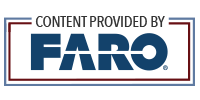
More users are applying 3D scanning to reverse engineering projects because the ability to efficiently and accurately scan measurements, features and details throughout various design iterations significantly reduces time to market when compared to traditional measurement methods. Realizing this, automotive, aerospace, defense and other part manufacturers have begun using 3D metrology to quickly and precisely reverse engineer existing objects when tasked with producing customized and spare parts, parts for which production has been discontinued or parts without an associated CAD file.
In addition to reducing the feedback loop between the design, prototyping and testing stages in reverse engineering projects, the data supplied by 3D scanning also provides guidance for the feasibility of subsequent steps in the manufacturing process and ensures that the produced part will reach the final design intent.
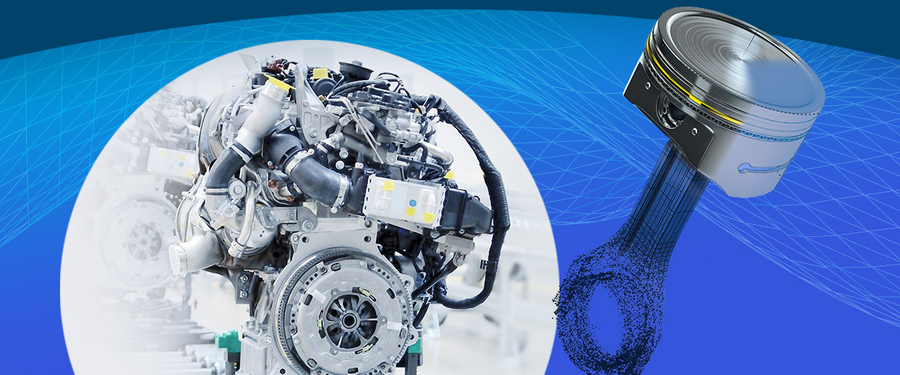
3D Scanners Provide More Detail in Reverse Engineering Applications
Reverse engineering a physical object requires the measurement of its height, width, depth, diameter and circumference, as well as other geometries such as the object's shape, which may include non-linear edges and angles. It may also be necessary to capture complex details such as the radius of certain features or characteristics that may occur beneath or between various features.
While traditional measurement techniques such as calipers and coordinate measurement machines (CMM) can measure the simple physical dimensions of a part, 3D scanning efficiently and precisely acquires all the data associated with the whole part, providing designers with a clearer understanding of the part in its entirety, including its surfaces, details and intricate features. Without the benefit of detailed 3D scanning, designers must rely on assumptions about the harder-to-obtain details of the part, and those assumptions often to lead to a poorly designed product that is not precisely what the customer requires. It is the completeness of the data provided by 3D scanning that brings considerable advantages to the overall application and the workflow.
Typically, the 3D measurement process includes multiple steps:
- First, the object is scanned and a point cloud, which identifies the shapes, contours and dimensions of the part, is created.
- Next, the collected data is rendered into a CAD file, or a 3D replica of the part.
- Finally, using software, the part can be modeled to generate a “blueprint” that is used for processing the part.
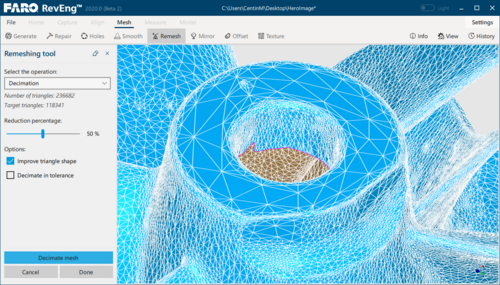
To achieve the first step of data collection, a variety of 3D scanning technologies are available. However, arm-mounted laser scanners typically have fewer limitations than other technologies and are more advanced when it comes to capturing smooth, organic geometries up to a certain level of detail. Further precision can be achieved via the use of a hard probe, which captures precise geometric features, as well as sharp machined lines. There are 3D scanners available to measure parts as small as a few centimeters in diameter up to objects as large as a boat hull, as well as scanners for varying levels of complexity.
Using these 3D scanning technologies, product designers can begin the process of reverse engineering to create custom components or replacement parts. For example, in the automotive industry, a laser scanner might be used to scan a car door and capture the more organic, molded aspects of the door, while a touch probe could be applied to capture the data associated with the door's machined parts. The collected data could then be used to create CAD files and models for products such as replacement components for a car that might be out of production.
The same technology can be applied when reverse engineering replacement parts for which a CAD file exists, but does not take into account that the part may have worn over time or with use. In these instances, 3D scanning not only speeds up the design process, but also ensures that replacement parts are more efficient from a usage perspective since they are designed on the actual, real-life condition of a particular part or machine.
The Benefits of Reverse Engineering with 3D Scanning
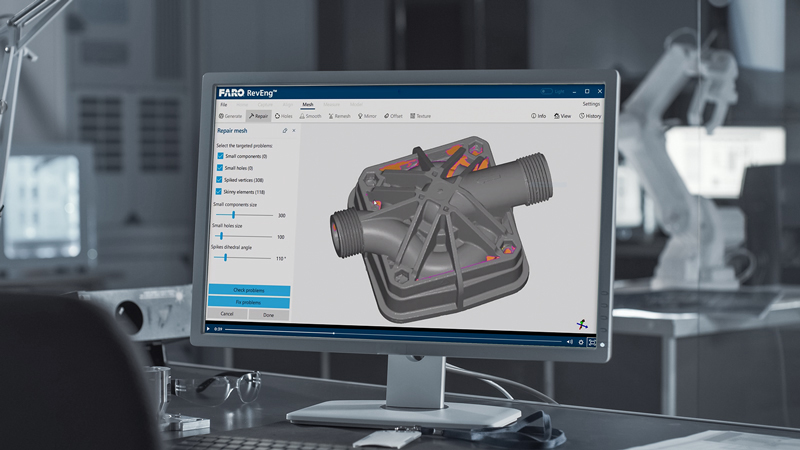
Because the product development process is often long and expensive and includes multiple iterations, time is crucial, so any reduction of schedule is a key value driver in design-related applications. The ability to use 3D scanning to accurately and efficiently reverse engineer an existing product is a significant time saver, with estimates suggesting that the technology can reduce the development process of analyzing the data and validating the design by up to 80% when compared with traditional methods.
Further, once the first prototype has been built, the user will become aware of the manufacturability of the part or product and can determine early in the design process whether it is feasible to manufacture. And, after the first prototype is built, 3D scanners can again be used to understand whether the part truly matches the design intent. In other words, it may be possible to manufacture it, but does it do what it needs to do, fit where it needs to fit and react to stress and wear as it should? Because multiple iterations are likely during reverse engineering projects, the ability to recognize such issues early in the process using efficient and accurate 3D scanning allows users to shave considerable time from the development phase. And, the shorter the feedback loop, the faster a high-quality part or product that will work as intended can be released to market.
Additional benefits include the reduction of scrap and waste associated with having fewer unusable design iterations and the elimination of finished parts that do not match the design intent, as well as the ability to produce higher-quality finished parts and products because 3D scanning ensures a complete understanding of the part and all its complexities.
3D Metrology Keeps Pratt Miller Ahead of the Pack
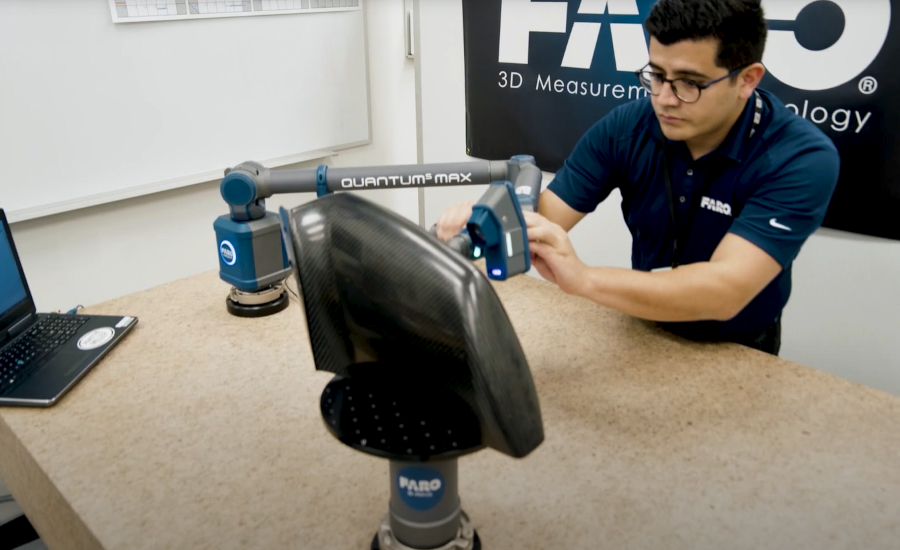
Pratt Miller, an engineering and product development company with roots in motorsports, boasts multiple victories and championships in programs such as Corvette Racing. The company has faced and defeated formidable opponents, including Ferrari, Porsche, BMW, Aston Martin and Lotus. Corvette Racing's record with eight 24 Hours of Le Mans victories is a testament to a company that understands the power of speed and precision, as well as the importance of careful inspection and data analysis before, during and after a race.
The team uses FARO® ScanArms throughout their process, relying on data accuracy, measurement arm portability and easy setup to gain information that keeps them on-track at 24 Hours of Le Mans. While the team has partnered with FARO for four generations of race cars, most recently, Corvette Racing and Pratt Miller used FARO technologies to return to the track with the Corvette C8.R in pursuit of another victory at Le Mans.
“Racing is all about precision and execution. Winning starts with preparation before the car ever sees the racetrack and having the right tools and processes for our team to be successful,” says Frank Wilson, quality manager, Pratt Miller. “Pratt Miller has been designing, building and racing the cars for Corvette Racing for over 20 years and our team is excited to return to the 24 Hours of Le Mans in hopeful pursuit of our ninth victory.”
Wilson continues: “We have relied on FARO Technologies to scan better, scan faster and scan more when developing four generations of Corvette race cars. And now we have done that on the Corvette C8.R, which will be running its first time at Le Mans this year.”
Pratt Miller uses a variety of FARO ScanArms throughout their process. The accuracy, portability and ability to collect and gather data quickly is invaluable in the fast-paced world of professional motorsports. “The metrology solutions provided by FARO are used from the earliest stages of our aero development, in reverse engineering, in support of design and in inspecting fixturing and molds before we start manufacturing, as well as in process at final inspections of race car components and for correlation of test data to on-track results,” explains Wilson.
Whether using the FARO ScanArm for hard-contact probing, non-contact scanning or a combination of both, the Pratt Miller team can use the arm in their lab, on the manufacturing floor, in the garage or on the road due to the portability, reliability and versatility of the equipment.
“Our team is excited for the Le Mans debut of the C8.R and to see it compete in the GT Pro Class at the biggest race in our sport against the best manufacturers and teams in endurance sports car racing,” says Wilson.
 Get in touch with a FARO representative to learn more here: faro.com
Get in touch with a FARO representative to learn more here: faro.com
